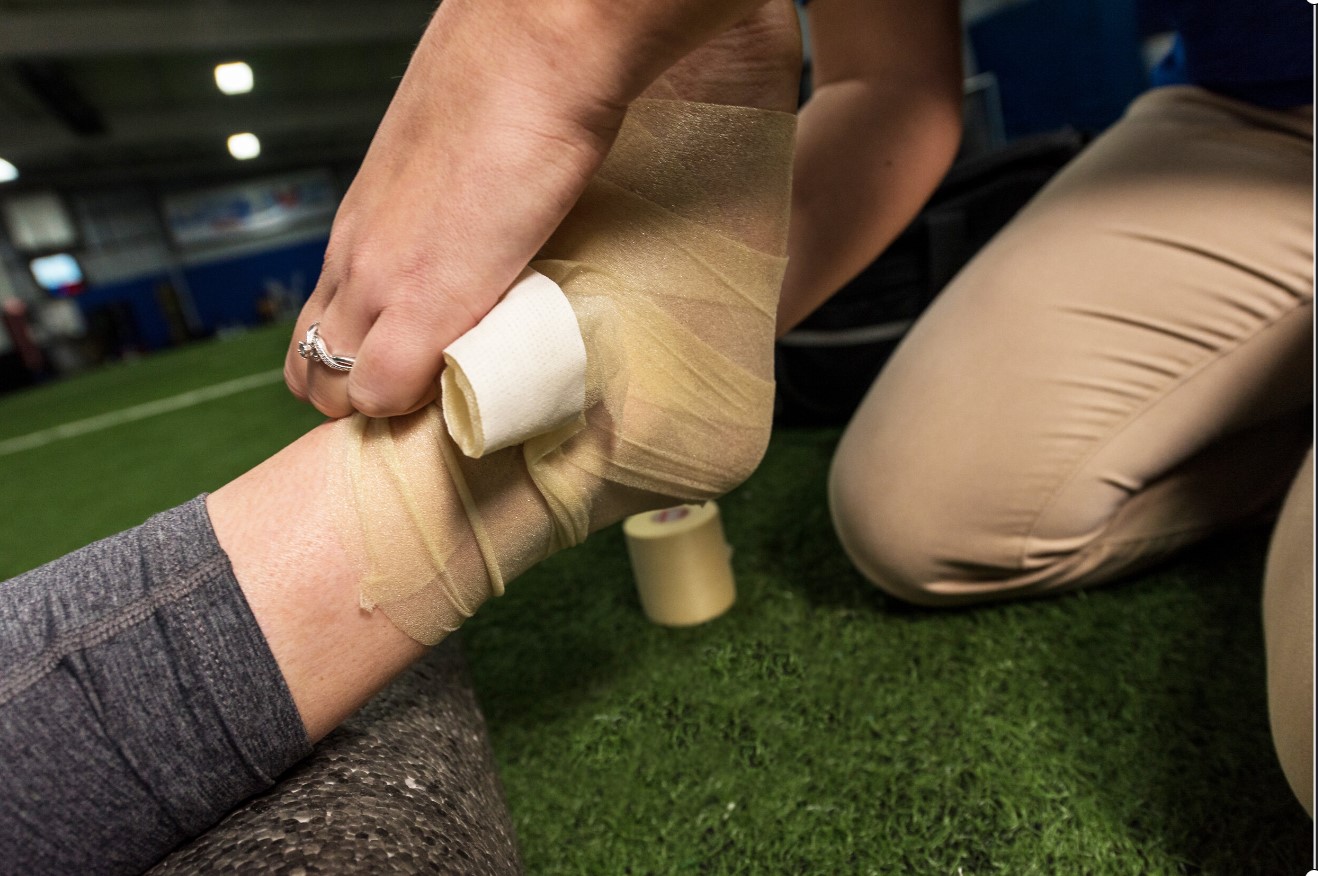
P.O.L.I.C.E. vs R.I.C.E.: the emergency treatment for acute injuries
The P.O.L.I.C.E. Principle Emergency Treatment for Acute Injuries: the long-used R.I.C.E. method may not be the best way to treat an acute injury. The acronym stands for Rest, Ice, Compression, and Elevation
For many years, physical therapists—as well as athletic trainers, healthcare providers, and sports medicine specialists—have recommended it for managing acute injuries.
Now, though, the P.O.L.I.C.E. Principle may be the new way your physical therapist approaches your acute injury treatment.
It can help guide you in the proper way to use ice and gentle motion to quickly get back to your normal activities.
Why R.I.C.E. Was Recommended
Under R.I.C.E., for an injury such as a sprained ankle, your healthcare provider would tell you to first rest it, then apply ice while using some form of compression (like an ACE bandage), and elevate the injured body part.
The thought process behind this is that in the initial days following injury, your body brings a lot of blood and fluid to the injured site to prepare it for healing.
But your body brings too much fluid to the injured area. This excessive fluid limits range of motion (ROM) around your joint, which can actually delay proper healing.
The Problem With R.I.C.E.
While the R.I.C.E. technique makes sense, it has a few shortcomings. First, it hasn’t really been proven to work like we think it does.
One study published in the Journal of Athletic Training found a lack of solid evidence that the R.I.C.E. treatment for ankle sprains leads to better outcomes.
In fact, some experts believe that applying ice right after an injury impedes the normal healing process.
Another problem with the R.I.C.E. technique is that many people take the “rest” phase a little too far.
Often after acute injury, a little bit of rest is necessary. However, you may feel compelled to rest your injured muscle or joint for far longer than is actually necessary.
That can lead to decreased muscle strength and flexibility, which can delay your return to normal function and activity.
Why P.O.L.I.C.E. Is Better
Now, some physical therapists are recommending the P.O.L.I.C.E. principle instead of R.I.C.E. The P.O.L.I.C.E. acronym means:
- Protection: During the first few days after an injury, you should certainly rest the injured joint, ligament, or muscle. After that, you can start gentle motion while still maintaining some protection of the injured area. During this time, you may require some sort of assistive device, like crutches, to walk.
- Optimum Loading: This describes the gentle motion you can start while in the Protection phase. For example, after a shoulder injury or shoulder surgery, you should be able to progress from a few days of rest to passive range-of-motion (ROM) movement, active ROM, and finally, rotator cuff strengthening exercises.
- Ice: Applying ice may help to manage the swelling around your injured muscle or joint, and ice can help decrease some of the acute pain that you may be experiencing. Your physical therapist (PT) can help you determine the best method of applying an ice to your injury. He or she can also teach you how to make your own ice pack.
- Compression: While applying ice, you can add compression with an ACE bandage. You can also use a product like Ice Tape to cool and compress the injury at the same time.
- Elevation: Elevation is simple for some body parts. An injured ankle or knee can be placed on a stack of pillows while you are lying down. An injury to your elbow or wrist requires that you elevate your entire arm on something. Your PT can help advise you on the best way to elevate your injury.
How Physical Therapy Can Help
The P.O.L.I.C.E. principle is a simple method to try after acute injury, but a visit to your physical therapist may be helpful or necessary.
He or she can first help you figure out the best protection for your injury.
For example, a shoulder injury may initially require the use of a sling, and a knee ligament injury may require a brace during the initial healing phases.
Your physical therapist can advise you on exactly how much protection your injured body needs as well as when it’s time to stop protecting the injury and start using the injured part again.
A PT can also guide you in the “optimal loading” part of the P.O.L.I.C.E. principle.
After an injury, you may be required to perform simple exercises and motions to allow your injured muscle or ligament to heal properly.
As your injury heals, your physical therapist can change your exercises to ensure that optimal loading and proper healing occurs.
When things are fully healed, you’ll be able to move freely and get back to normal activity without having to worry about stiffness or loss of strength that may come with a lengthy period of rest.
References about R.I.C.E. and P.O.L.I.C.E.:
- Bleakley CM,Glasgow P, MacAuley DC. PRICE needs updating, should we call the POLICE? Br J Sports Med. 2012 Mar;46(4):220-1. doi:10.1136/bjsports-2011-090297
- van den Bekerom MP, Struijs PA, Blankevoort L, et al. What Is the Evidence for Rest, Ice, Compression, and Elevation Therapy in the Treatment of Ankle Sprains in Adults? J Athl Train. 2012 Jul-Aug;47(4):435-43. doi:10.4085/1062-6050-47.4.14
Read Also:
Emergency Live Even More…Live: Download The New Free App Of Your Newspaper For IOS And Android
Treating Injuries: When Do I Need A Knee Brace?
Wrist Fracture: How To Recognise And Treat It
Carpal Tunnel Syndrome: Diagnosis And Treatment
Knee Ligament Rupture: Symptoms And Causes
Lateral Knee Pain? Could Be Iliotibial Band Syndrome
Knee Sprains And Meniscal Injuries: How To Treat Them?
Stress Fractures: Risk Factors And Symptoms
What Is OCD (Obsessive Compulsive Disorder)?
RICE Treatment For Soft Tissue Injuries


